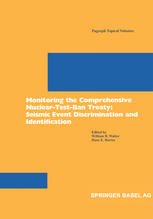

Most ebook files are in PDF format, so you can easily read them using various software such as Foxit Reader or directly on the Google Chrome browser.
Some ebook files are released by publishers in other formats such as .awz, .mobi, .epub, .fb2, etc. You may need to install specific software to read these formats on mobile/PC, such as Calibre.
Please read the tutorial at this link: https://ebookbell.com/faq
We offer FREE conversion to the popular formats you request; however, this may take some time. Therefore, right after payment, please email us, and we will try to provide the service as quickly as possible.
For some exceptional file formats or broken links (if any), please refrain from opening any disputes. Instead, email us first, and we will try to assist within a maximum of 6 hours.
EbookBell Team

4.8
34 reviewsIn September 1996, the United Nations General Assembly adopted the Comprehensive Nuclear-Test-Ban Treaty (CTBT), prohibiting nuclear explosions worldwide, in all environments. The treaty calls for a global verification system, including a network of 321 monitoring stations distributed around the globe, a data communications network, an international data center, and onsite inspections, to verify compliance. The problem of identifying small-magnitude banned nuclear tests and discriminating between such tests and the background of earthquakes and mining-related seismic events, is a challenging research problem. Because they emphasize CTBT verification research, the 12 papers in this special volume primarily addresses regional data recorded by a variety of arrays, broadband stations, and temporarily deployed stations. Nuclear explosions, earthquakes, mining-related explosions, mine collapses, single-charge and ripple-fired chemical explosions from Europe, Asia, North Africa, and North America are all studied. While the primary emphasis is on short-period, body-wave discriminants and associated source and path corrections, research that focuses on long-period data recorded at regional and teleseismic distances is also presented Hence, these papers demonstrate how event identification research in support of CTBT monitoring has expanded in recent years to include a wide variety of event types, data types, geographic regions and statistical techniques.